Art World
From Jo Hopper to Sophie Taeuber-Arp, Here Are 5 Pioneering Women Artists Who Were Overshadowed by Their Spouses
These women were much more than merely their more-famous husband's muses.
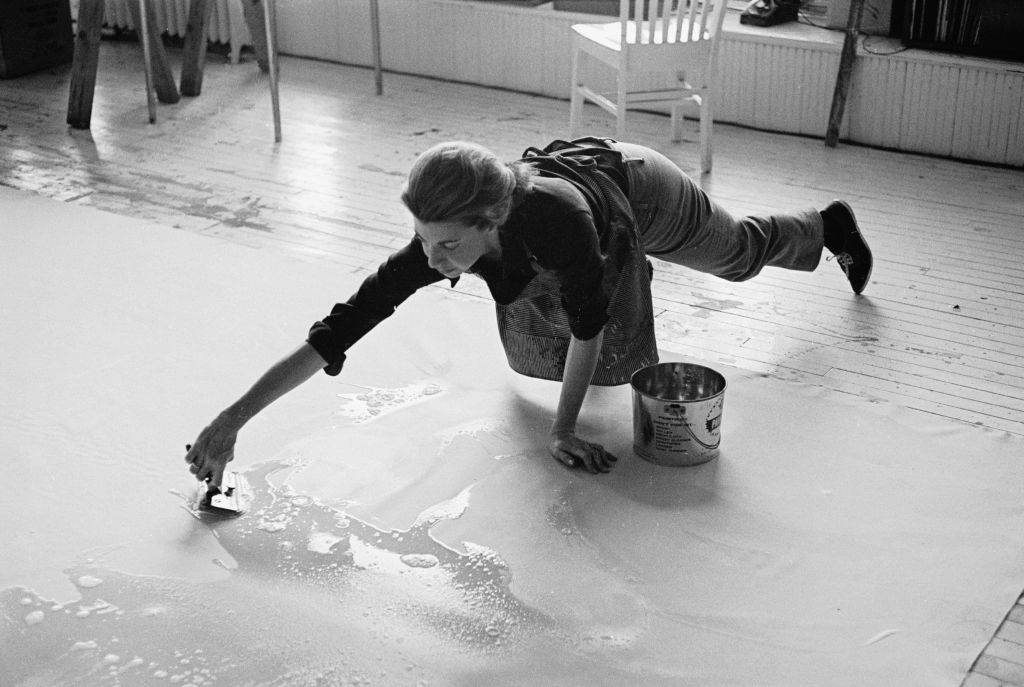
These women were much more than merely their more-famous husband's muses.

Jo Lawson-Tancred

As members of the same bohemian milieus, it is little wonder that so many artists end up dating or getting married. Unfortunately, throughout history, when it comes to men and women, this has more often had the effect of obscuring the wife’s achievements—or even limiting her creative output vis-a-vis her male counterpart. This is especially true of 20th century artists like Lee Krasner, Elaine de Kooning, and Helen Frankenthaler; though they are now well-known for their huge contributions to Abstract Expressionism, throughout much of their careers each was overshadowed by their more-celebrated husbands.
Although the surrealist artists Dorothea Tanning and Leonora Carrington are by now undoubtedly renowned painters, neither received the same widespread acclaim as their one-time romantic partner Max Ernst.
There are many more. We’ve put together a list of five accomplished women artists who we think you should know, who deserved much more attention in their time than they received.
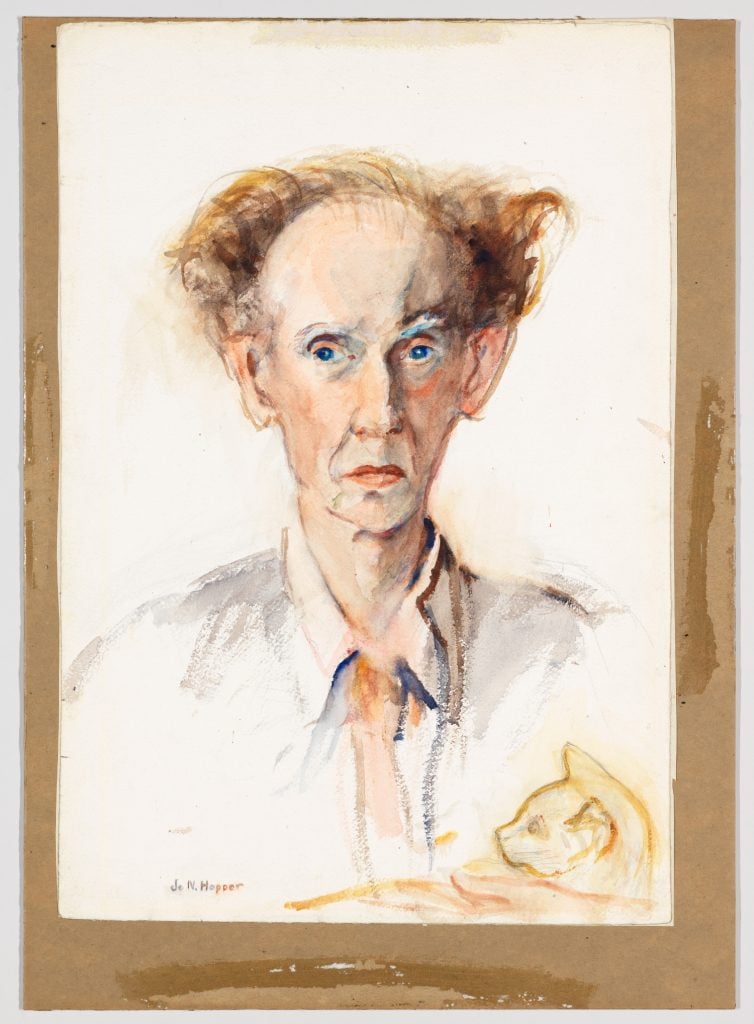
Josephine Nivison Hopper, Bertram Hartman, Painter (c. 1950s). Photo: Whitney Museum of American Art, New York; Josephine N. Hopper Bequest.
Before she married Edward Hopper, one of the most iconic American artists in 1924, at the age of 41, Josephine Nivison Hopper made her living as a public school teacher. She maintained a thriving art practice on the side and was often invited to participate in group exhibitions. She became romantically involved with Edward after joining an artists’ colony in Gloucester, Massachusetts, and they remained together until his death in 1967, although Jo’s diaries have revealed that the couple’s marriage was sometimes turbulent.
Edward immediately benefitted from the relationship. Jo influenced him to embrace the medium of watercolor and secured him a spot in a group show at the Brooklyn Museum in 1923, an opportunity that kickstarted his career after the institution bought his painting. As his fame grew to epic proportions, Jo never wavered in her loyal support, from keeping his records to helping him name several of his most famous canvases, including Nighthawks (1942). In return, according to the author Olivia Laing, Edward “didn’t just fail to support Jo’s painting, but rather worked actively to discourage it, mocking and denigrating the few things she did manage to produce.”
During their marriage, Josephine struggled to get widespread recognition for her work, only participating in a handful of group shows, although she was awarded the Huntington Hartford Foundation fellowship in 1957. After her husband died, she bequeathed both their oeuvres to the Whitney Museum of American Art, whereupon her own output disappeared from public view and was reportedly left to languish in the basement.
Only in the past decade has she enjoyed a revival, becoming the subject of retrospectives like “Josephine Nivison Hopper: Edward’s Muse” at the Edward Hopper House Museum and Study Center in 2022.
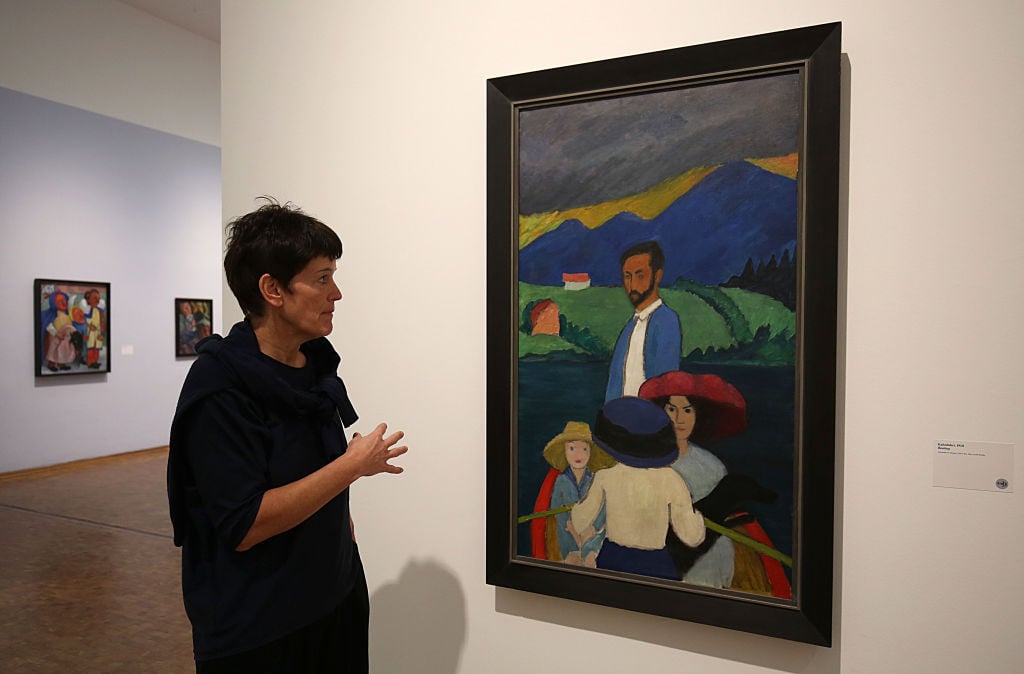
The curator Rita Kersting speaks before Gabriele Münter’s picture “Kahnfahrt” at the exhibition “Painting without beating about the bush” at Museum Ludwig. Photo: Oliver Berg/picture alliance via Getty Images.
Gabriele Münter knew that she wanted to become an artist from a young age so, after being orphaned at the age of 21, she used her generous inheritance to support her practice. After enrolling at the short-lived Phalanx School in Munich, she met its founder Wassily Kandinsky who became a mentor and, eventually, a romantic partner. Though they got engaged, Kandinsky was still married to his cousin and proved reluctant to commit. Nonetheless, both artists influenced each other in the production of ever more abstracted and vibrantly colorful paintings and were leading lights of Der Blaue Reiter (the Blue Riders), a group of artists at the very forefront of German Expressionism.
Kandinsky was prone to patting Münter on the head and encouraging her to “paint like a man,” and after he returned to Russia in 1914 he cut off contact with her abruptly, leaving her heartbroken.
As a consequence, Münter fell to the margins of their artistic circle and, embittered by the experience, refused to return some 1,000 of Kandinsky’s works in her possession. Forging her own path, she continued producing painterly landscapes, portraits, domestic interiors, and folk art, always with a knack for capturing her subject’s essence.
While he is celebrated as an avant-garde pioneer, she is perhaps best known as one of his devoted followers despite the fact that her inventive painterly sensibility may have inspired Kandinsky. “In the eyes of many, I was only an unnecessary side-dish to Kandinsky,” she once recalled. “It is all too easily forgotten that a woman can be a creative artist with a real, original talent of her own.”
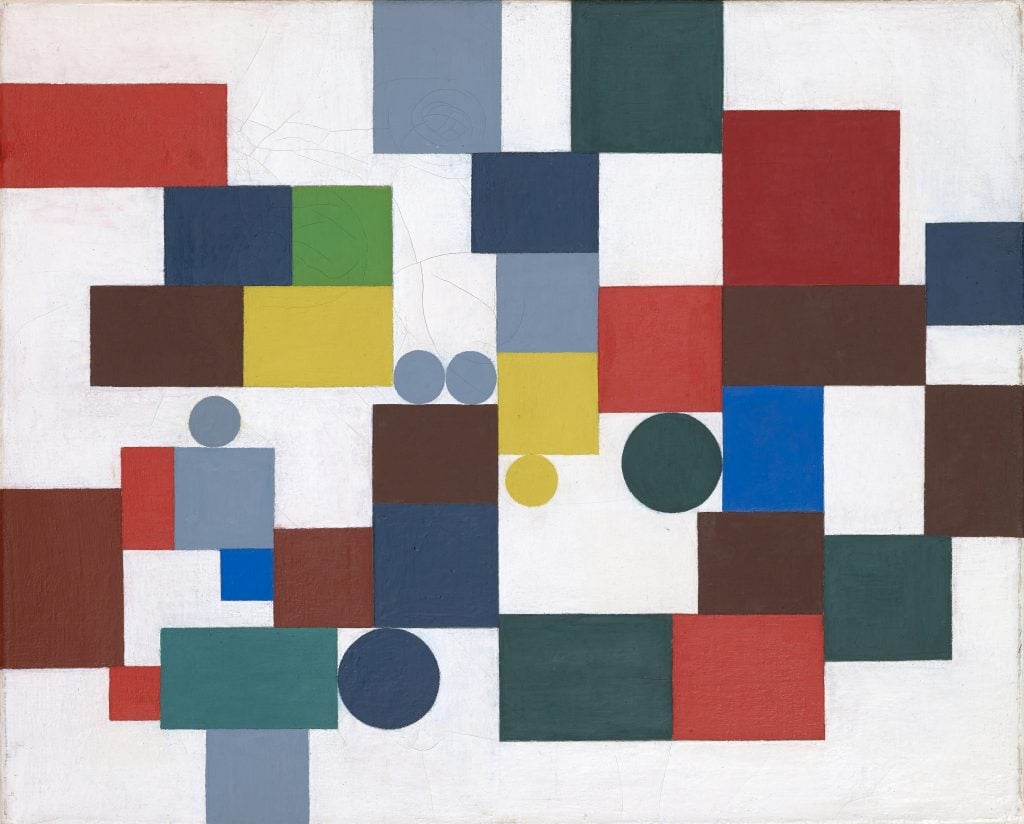
Sophie Taeuber-Arp, Composition à carrés, rectangles and cercles coïncidents (1939). Photo: Sepia Times/Universal Images Group via Getty Images.
As a child growing up in Switzerland, Sophie Taeuber showed an early enthusiasm for sewing and decided to study textile design. She met the Dadaist sculptor and painter Jean Arp in 1915 and the couple married in 1922. At around this time, Taeuber-Arp was teaching embroidery and textile arts and, in her own practice, producing geometric compositions in a variety of media that would eventually be counted as some of the very first Constructivist works. She had also become a regular at the Cabaret Voltaire, designing puppets and sets for Dada performances to which she would also contribute as a dancer.
Other notable projects include the “Five O’Clock” tea room and foyer-bar at the Aubette in Strasbourg, an avant-garde leisure complex conceived by Theo van Doesburg in the 1920s that immersed visitors in its daringly abstracted interior designs. Taeuber-Arp fled Nazi occupation in Paris in 1940, eventually returning to Switzerland where she died in 1943 from accidental carbon-monoxide poisoning.
Taueber-Arp was a respected member of several modernist movements, including Dada, Constructivism, and Concrete Art, and her lively geometric compositions were important contributions to the early evolution of abstraction. Nonetheless her reputation has waned since her death in 1943. Her husband, meanwhile, is still remembered as one of the 20th century’s great artistic innovators, though he himself freely admitted in 1955 that “[Sophie] had a decisive influence on my work.”
A recent attempt to correct this oversight has seen Taueber-Arp become the only woman to be featured on a Swiss bank note and she received a major retrospective at both Tate Modern and MoMA in 2021. Hauser & Wirth began representing her estate in 2020.
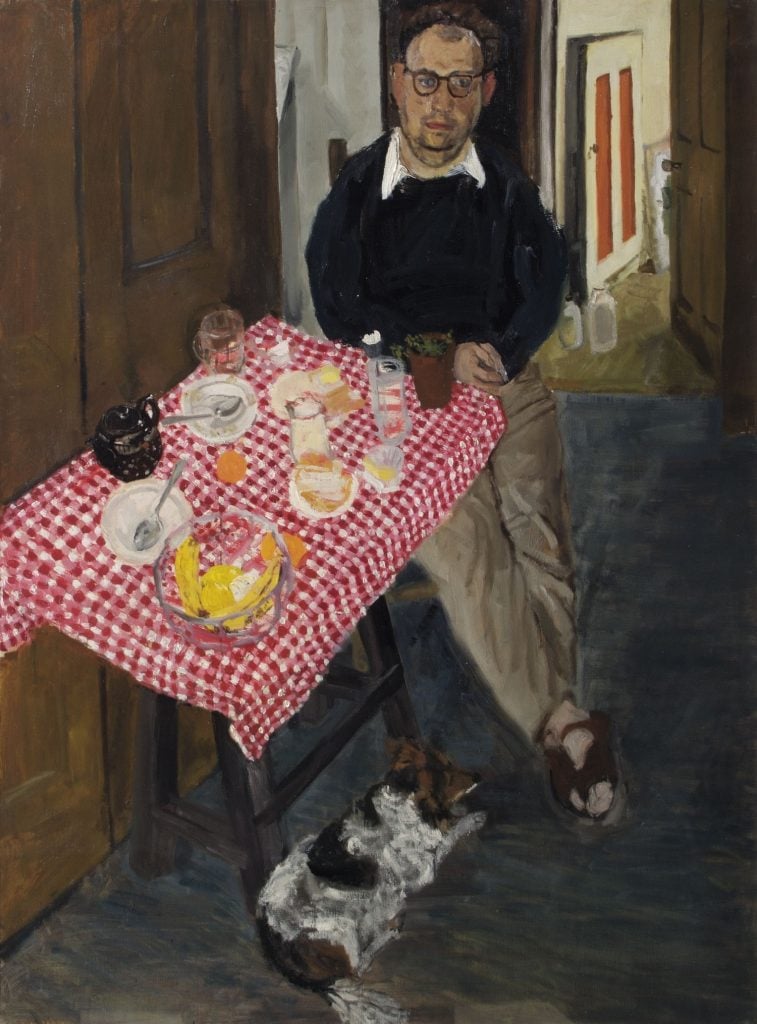
Jean Cooke R.A., Early Portrait of John Bratby, R.A. (1954). Photo: Andy Johnson, © Royal Academy of Arts, London.
Studying at art school in London, Jean Cooke specialized in a wide variety of media including drawing, textile design, sculpture, and pottery. Though she would eventually become best known as a painter, she originally set up a ceramics workshop in 1950. She met the painter John Bratby in 1953, and entered into an extremely volatile 20-year relationship that resulted in marriage and four children. After they separated in 1973, Cooke rented a cliffside cottage in East Sussex and, until her death in 2008, sought solace in its dramatic coastal views.
Despite the difficulty of finding time to work within the confines of her marriage, Cooke’s many transfixing, wide-eyed self-portraits are a record of her perseverance. “I started painting myself the way I wanted to be seen,” she once said. After her first solo exhibition in 1964, she soon gained a following of loyal collectors.
In fits of jealousy over her commercial success, Bratby would often destroy Cooke’s works by painting over or slashing them. He may be recognized as a founder of “kitchen sink realism”—a British cultural movement that extended to films, plays, and novels, and favoured gritty portrayals of everyday life for work-class Britons—but it is Cooke’s vulnerable expositions of domestic life, with all its harsher realities, that has left a lasting impression.
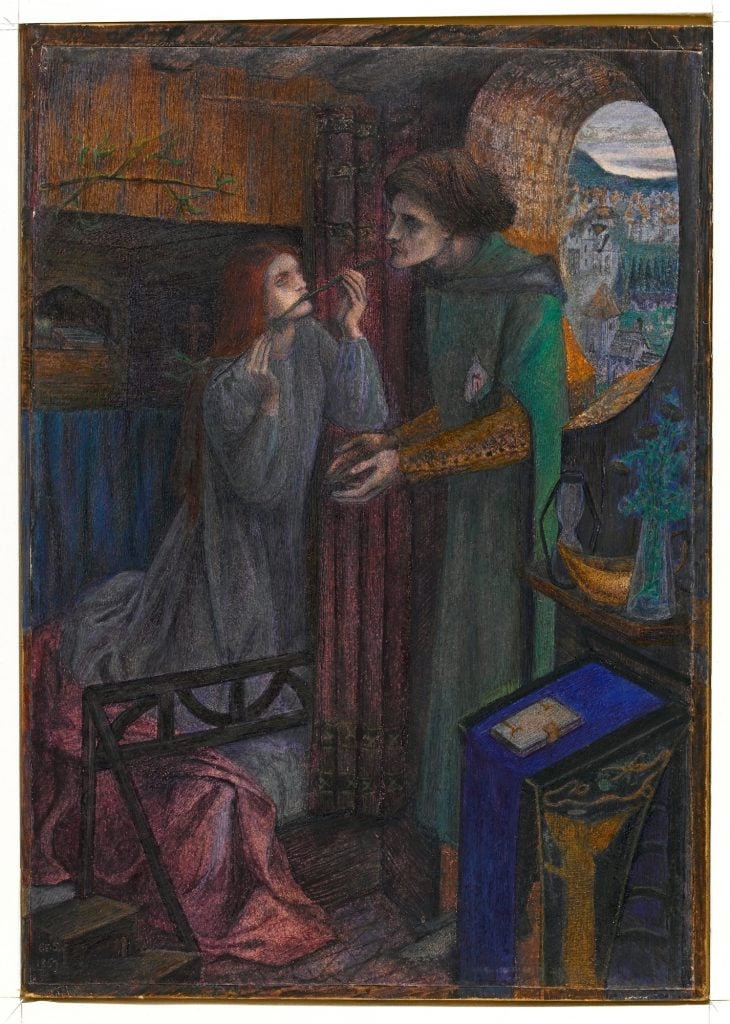
Elizabeth Siddal, Clerk Saunders (1857). Photo: © The Fitzwilliam Museum, University of Cambridge.
Elizabeth Siddal is remembered first and foremost as the muse and lover of Pre-Raphaelite painter Gabriel Dante Rossetti, a pre-eminent artist of the Victorian era who remains a household name in the U.K. As the model for paintings like John Everett Millais’s Ophelia, Siddal’s delicately refined features and cascading, copper-colored hair came to define the aesthetics of the Pre-Raphaelite Brotherhood. As the movement’s name suggests, however, it was male-dominated, and Siddal’s own creative output as a poet and artist was sidelined.
Initially taught to draw by Rossetti, with whom she had an on-and-off romantic relationship, Siddal adopted a similar style and thematic interest in Mediaeval literary sources. These works quickly attracted the attention of the illustrious art critic John Ruskin, who believed she was a “genius” and paid an annual salary of £150 to support her practice. Siddal was the only woman to contribute to the Brotherhood’s summer exhibition of 1857 and one of her best known paintings, Clerk Saunders, sold to the American collector Charles Eliot Norton. Despite suffering ill health, Siddal left London and the overbearing influence of both Rossetti and Ruskin to enrol at the Sheffield School of Art.
Her studies were unfortunately interrupted by serious illness and she eventually reunited with Rossetti, marrying him in 1860. Just two years later, she died at the age of 32.
More Trending Stories:
Art Dealers Christina and Emmanuel Di Donna on Their Special Holiday Rituals
Stefanie Heinze Paints Richly Ambiguous Worlds. Collectors Are Obsessed
Inspector Schachter Uncovers Allegations Regarding the Latest Art World Scandal—And It’s a Doozy
Archaeologists Call Foul on the Purported Discovery of a 27,000-Year-Old Pyramid
The Sprawling Legal Dispute Between Yves Bouvier and Dmitry Rybolovlev Is Finally Over